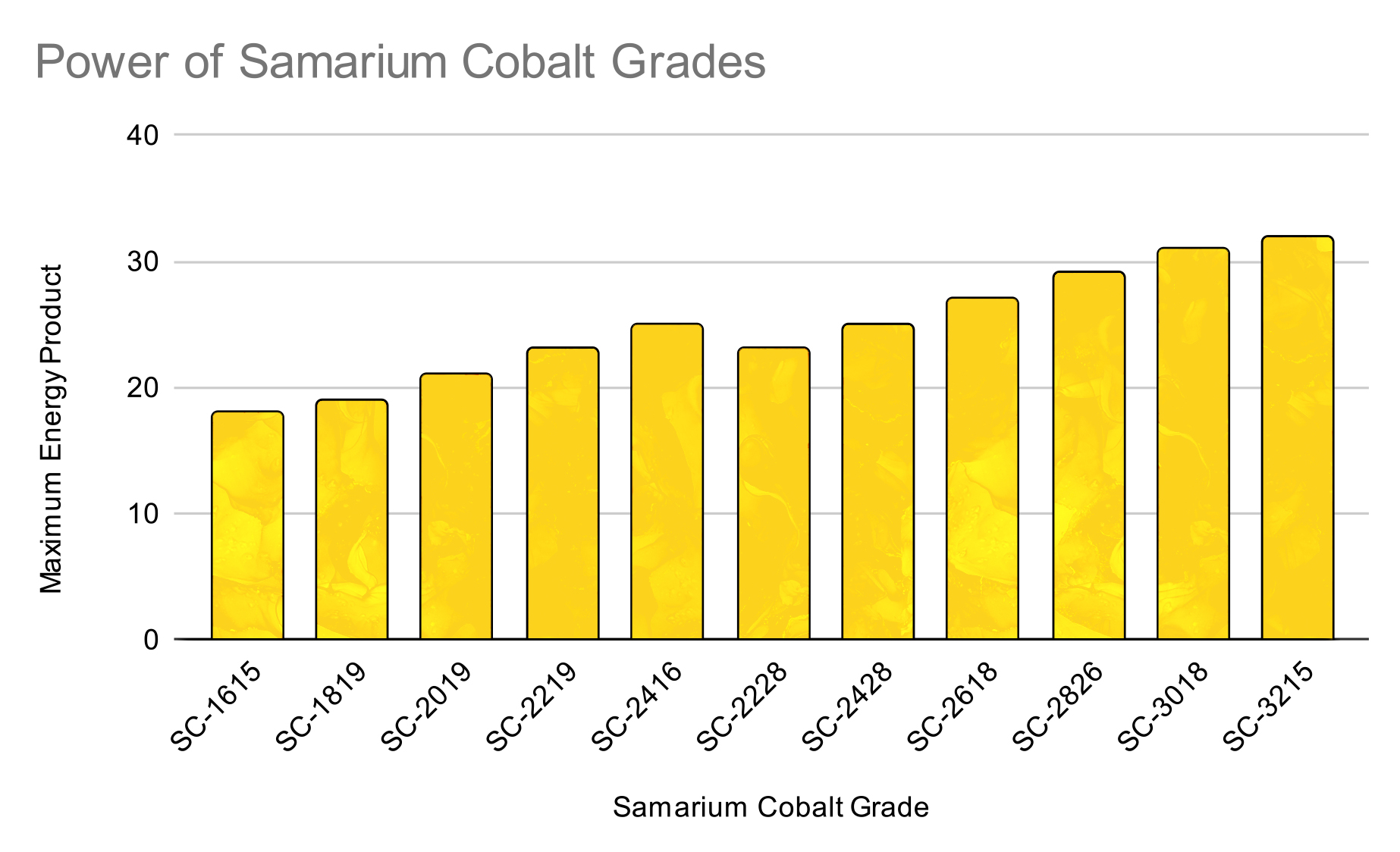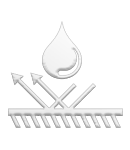Grades of Samarium Cobalt (SmCo) Magnets
Learn about all of the available SmCo grades and properties below.
Samarium Cobalt (SmCo) Magnet Grades
Samarium cobalt magnets are rare earth magnets and the second most powerful permanent magnet available. They are mostly used in aerospace, automotive and engineering applications. They perform exceptionally well in extreme high and low temperatures which is an advantage over neodymium magnets.
There are different grades of magnets which are used for different purposes. The grade of a magnet refers to its magnetic strength, or how strong the magnetic field is. The higher the number next to the SC, the stronger the magnetic field. For example, SC-2219 has a stronger magnetic field than SC-1819.

The Two Types of Samarium Cobalt (SmCo 1:5 and SmCo 2:17)
Samarium Cobalt magnets come in two categories – SmCo 1:5 and SmCo 2:17. SmCo 1:5 is excellent when the magnet needs to be machined into a small and intricate shape. SmCo 2:17 is very brittle which means it can’t easily be produced into complicated shapes. However, SmCo 2:17 is the most popular choice due to its high magnetic power and excellent resistance to demagnetisation.
SmCo1:5
These are the older variations of SmCo magnets and they have one samarium atom per 5 cobalt atoms. The magnetic power (or (BH) max range) is from 15 to 25MGOe and the maximum operating temperature is up to 250°C.
The SmCo1:5 magnets are generally magnetically weaker than SmCo2:17 but they are less brittle. This means they are much easier to machine into thin and small components. SmCo 1:5 contains no iron so has excellent corrosion resistance.
SmCo2:17
SmCo2:17 are the newer variations and they have an atomic ratio of two samarium atoms to 14-17 cobalt atoms. The magnetic power (or (BH) max range) is from 20 to 32MGOe and the maximum operating temperature is up to 350°C.
Sm2Co17 performs much better than neodymium magnets in high temperatures which means they’re ideal for use inside of engines, machinery, ovens or other hot environments.
What Are The Most Common SmCo Grades?
SmCo2:17 is the most commonly used grade of samarium cobalt magnets due to it’s high magnetism and high coercivity. However, there is a very slight chance of corrosion if the magnet is in contact with water due to the minor iron content. This can be easily prevented with a coating of nickel (Ni). Samarium cobalt magnets can start as low as SC-1615 (MGOe 15-18) and go as high as SC-3215 (MGOe 30-32) .
SmCo1:5
SC1615
SC1819
SC2019
SC2219
SC- 2416
(15MGOe – 25MGOe)
SmCo2:17
SC2228
SC-2428
SC2618
SC2826
SC3018
SC3215
(21MGOe – 32MGOe)
SmCo1:5
SC1615
SC1819
SC2019
SC2219
SC- 2416
(15MGOe – 25MGOe)
SmCo2:17
SC2228
SC-2428
SC2618
SC2826
SC3018
SC3215
(21MGOe – 32MGOe)
What Is The Strongest SmCo Grade?
The strongest grade of SmCo magnet is SmCo32 which have a Br (KG) of 11.2-11.8. The disadvantage of SmCo32 magnets is they cost more than any other grade so they’re only used where power is more important than price.


Technical Definitions
Coercive Force (Hc) The measurement to eliminate the magnetic field when exposed to an opposing magnetic field. The higher this unit, the more resistance a magnet has to demagnetisation.
Intrinsic Coercive Force (Hci) The required strength of the opposing magnetic field to completely demagnetise a magnet to the value of 0.


Maximum Energy Product (BH)max – This measurement shows the magnetic density of a material that produces a magnetic field. This measurement establishes how powerful a magnetic field is and it’s often abbreviated as MGOe.
kG (KiloGauss) – 1 Kilogauss = 1000 Gauss. Gauss is the unit of measurement that measures magnetic induction.
T (Tesla) – 1 Tesla = 10,000 Gauss. Tesla is the unit of measurement that measures magnetic induction.
Oe – Oersted – A measurement of magnetic field strength.
kA/m (kiloampere) – 1 kiloampere = 12.56 oersted – A measurement of magnetic field strength
MGOe (Maximum Energy Product) – The unit of measurement that refers to the strength, power or magnetic density of a magnetic field.
kJ/m³ (Kilojoule per Cubic Meter) – 1 Kilojoules = 1,000 Joules – The unit of measurement for energy.







